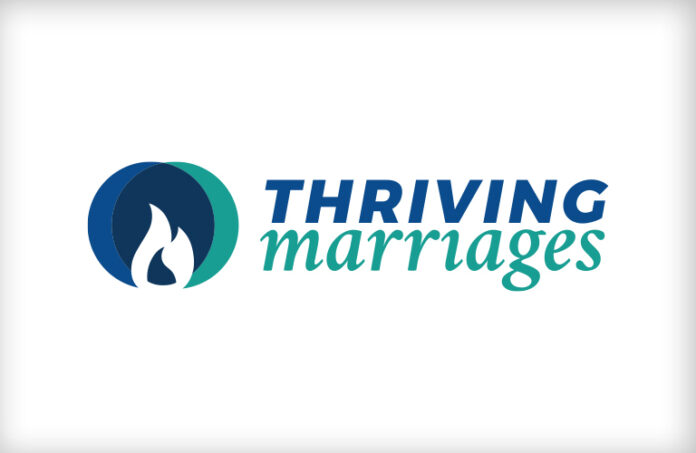Debt can cause all kinds of stress in a marriage. Have you found yourself feeling hopeless, like there’s no way to get out of debt? We’ve heard from many couples who say credit cards have led them down the path to debt.
Plastic creates an illusion about what you can afford. A study done years ago said that people who use credit cards will spend 34 percent more than if they used cash or wrote a check. Why? Because in their minds, they don’t have to pay in full anytime soon. That’s part of the mindset that is so dangerous. Because of the high interest rates on credit cards, people need to get into the mindset to use the cards only when what they are purchasing fits in the budget.
The worst situation is when you’re simply able to pay only minimum payments on your credit cards—that’s often where the stress arises because by paying minimums only, you quickly realize that you’re not getting out of debt any time soon. Usually you end up barely covering the interest payment.
For example, let’s say you spend $2000 on a credit card. The minimum payment on that amount will be roughly 2 percent a month, or $20. That certainly seems affordable, right? So, you just make those $20-a-month payments. Now here’s a sobering truth—even if you use the card no more, and if you pay only that $20, it’s going to take you about nine years to get out of debt and repay that original $2000. And at the end of that time, you’ll have paid more than $1000 dollars of interest! So if you used your credit card to purchase something on sale, in the end, you’ve not gotten a sale price at all!
If you’ve found yourself in debt, here are ten steps toward finding your way out of debt:
-
Gather all your bills, along with a pencil, calculator, some paper, and some file folders. Prepare a file folder for each type of bill.
-
Make a list of your regular monthly bills. On this list, do not include bills that you’re trying to pay off (such as credit card bills); list only the bills that you’ll always get or at least are long term (such as tithe, mortgage or rent, car payment, utilities, insurance, etc.).
-
In the space beside each of these bills, list the amount (or average amount) you pay per month. Then create a subtotal, which represents the amount of money you must pay out as your bills arrive every month.
-
The next step is more difficult. You need to figure out what needs to be added for essentials such as food, gas, and other miscellaneous expenses (maybe it’s piano lessons for the kids or some other expense). Subtotal these expenses.
-
Now figure out the total for #3 and #4 above. This number represents your vital, bare-bones budget (although, even here, you may find ways to pare back. Perhaps you can find a less expensive place to grocery shop, or you can set the thermostat higher or lower). In any event, this is a basic number for you to work with.
-
Write down how much you earn each month. Subtract the subtotal from #5 above from your income. Now you know what you have left to put toward retiring your debts.
-
On a separate sheet of paper, make a list of every other bill that you need to clear up. This is where you list your credit cards, medical bills, or other places that have extended you credit.
-
Go through each bill and write out the total amount that you owe for each. This amount will change from month to month as you make payments and as interest is added, but for now, just write it down. (By the way, for this to work, put away all those credit cards—cut them up, put them on ice, whatever. If you want to get out of debt, you have to commit to not adding to your debt.) After you’ve written down all the totals, rewrite the list in order of the amount owed, starting with the lowest. Generally this is the order in which you’ll attempt to pay them off.
-
Decide on a standard amount that you can afford to pay on each bill. Credit cards have minimums, so start there, understanding that you’re going to try, as quickly as possible, to get above that minimum payment in order to make headway. Once you’ve figured out all the minimum payments for each bill, see if there is leftover in your budget. If so, the extra should go to that first bill on the list, the lowest one. As soon as that one is paid off, you move up to the next bill, adding to the minimum payment that you already put beside it the minimum payment from the previous bill and any extra that was in your budget. Pay that one off. Then keep moving up the list and you’ll see that you’ll be adding more and more to the bottom line and paying off the higher ones faster and faster.
-
On a third sheet of paper, figure out how you’ll be doing the payouts. If you get paid twice a month, then make two columns. If every week, then four columns. Look at the due dates for each bill and write that bill into the corresponding pay period (paying bills on time and avoiding late fees will already give you a raise!). Now you know what you have to pay with each paycheck. You should photocopy this list or have it on your computer so you can print a new one out each month. When you get a paycheck, pull out the bills that need to be paid and get them into the mail or set up for online payments.
Now you’re on your way!


